Net-zero energy

Nearly 2,000 solar panels cover the roof, south wall and parking building at PS 62 on Staten Island.
The future is as bright as the sun at Staten Island’s PS 62, the Kathleen Grimm School for Leadership and Sustainability, which uses solar energy and a host of other eco-friendly initiatives to create as much electricity as it uses.
With nearly 2,000 solar panels covering the school’s roof, south wall and parking building, as well as plain old power conservation, this net-zero energy school is showing its students how to prevent climate change every day.
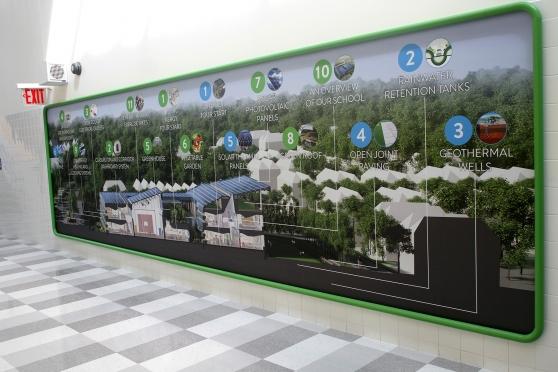
A panorama depicts the energy-producing and energy-saving features at the school, which has become a model for the Carbon Free and Healthy Schools Initiative.
This school with 450 students in pre-K through 5th grade has become a model for the Carbon Free and Healthy Schools Initiative, a coalition of New York City unions, including the UFT, that is working to make sure some of the federal funds in the Biden administration’s infrastructure package are used to make New York City schools clean and green.
“We’re instilling in students how to become good stewards of the environment,” said Annemarie Summa Barbarino, the UFT chapter leader and a physical education teacher at the school.
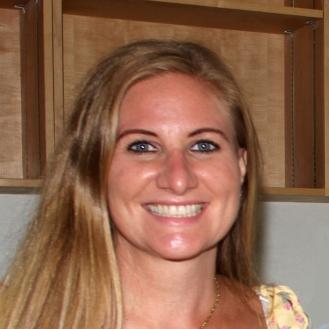
Chapter Leader Annemarie Summa Barbarino.
Everywhere they look, students at the Rossville school can find that lesson. The school has stationary bicycles in the building and on the playground for students to exercise. The mechanical energy generated when they pedal is converted to electricity for the school. Window shades are kept open when it’s sunny, so classrooms can use natural light instead of electric light whenever possible. The electric lights are on timers when they are used, and the light switches are color-coded to indicate which lights are available at certain times of day.
“We teach students about the school from the moment they walk into the building,” said Laura Chernoff, a prekindergarten teacher at PS 62. “I have the youngest members of the school. They can learn about this at that age.”
Chernoff says incoming students get a tour of the school and its many environment-friendly features.
PS 62 also has 81 geothermal wells drilled 400 feet into the ground. The wells pull excess heat underground when the temperature reaches 95 degrees Fahrenheit outside and draw heat up to the surface when the temperature drops to 20 degrees. This process cools the building in the summer, warms it in the winter and allows the school to use up to 33% less energy on heating and cooling. To heat its water, the school uses solar thermal panels instead of electricity. With all these measures, the school makes enough electricity in one day to light the Verrazano Bridge for 16 nights.
But PS 62’s environmental sensibility isn’t limited to power use. “We do a lot in our school to keep it green,” said kindergarten teacher Celeste Paesano-Vitale. “We recycle plastic, and food scraps for composting.”
During the 2015–16 school year, PS 62 formed a partnership with the environmental group GrowNYC so experts could teach staff and students about recycling and composting. The classrooms and the cafeteria have labeled bins for both students and staff to sort waste. To cut down on plastic use, the school has dedicated stations to refill water bottles. Students can join “green teams” to monitor their recycling habits and to create instructional posters to help remind them how to sort waste.
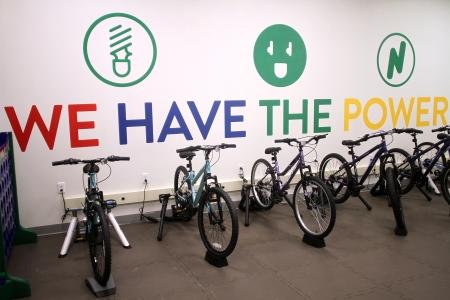
When students pedal the stationary bicycles in the building and on the playground, the me-chanical energy they generate is converted to electricity for the school.
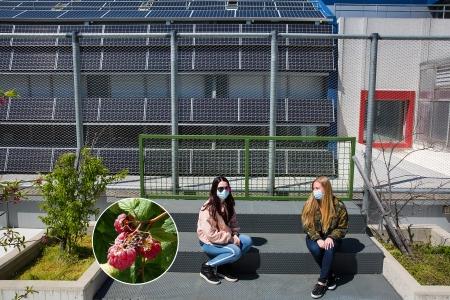
UFT delegate Teresa Fabbella (left) and Chapter Leader Annemarie Summa Barbarino sit in the school’s garden, where raspberries (inset) are among the edible plants that grow.
Some of the school’s best parking is reserved for low-emission hybrid vehicles, encouraging staff to shrink their carbon footprint during their commute.
The school even has a rooftop garden full of edible plants, and permeable paving on the school grounds absorbs up to 2 inches of rainwater, directing it into the soil instead of allowing it to flood sewers and streams.
The proenvironment attitude at PS 62 permeates the school’s lessons. “They’re getting a really good education on it,” said Victoria Martino, a 4th-grade teacher.
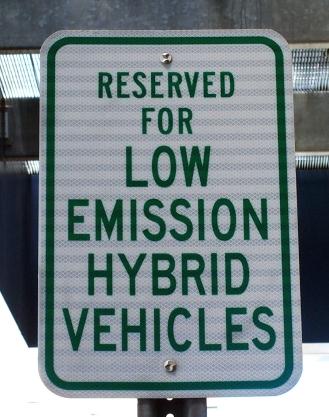
Low-emission hybrid vehicles get some of the best parking.
Martino said she and her co-teacher, Stephanie Barone, polled their students about whether it was OK to use plastic water bottles and then assigned them essays on the topic. “After the lesson, their opinions changed,” said Barone. “They were so much more aware.”
Chernoff’s prekindergarten students grow vegetable plants from seeds in the roof garden. It’s amazing to see the sustainability process in action,” she said. “Everything is so hands-on.”
Her students also bring in garbage from home to recycle into art projects.
Teachers at PS 62 make sure to show their students the parallels between taking care of the planet and taking care of themselves. “We encourage exercise,” said Summa Barbarino, “and eating healthy. Healthy environment and healthy students.”
She said students also apply the school’s values — “not being wasteful, reusing what we can, protecting the global community” — in their everyday lives.
“It’s not just in the school,” she said. “The students bring it into the real world.”
Barbarino said one student even started cleaning up the beach during her vacation when she saw it was covered in litter.
Natalie Kabakov, one of the school’s 3rd-grade teachers, said the green habits even go home with the teachers.
“We’re definitely recycling at home,” she said. “Everybody in the house has a role in protecting our community. And that started here.”